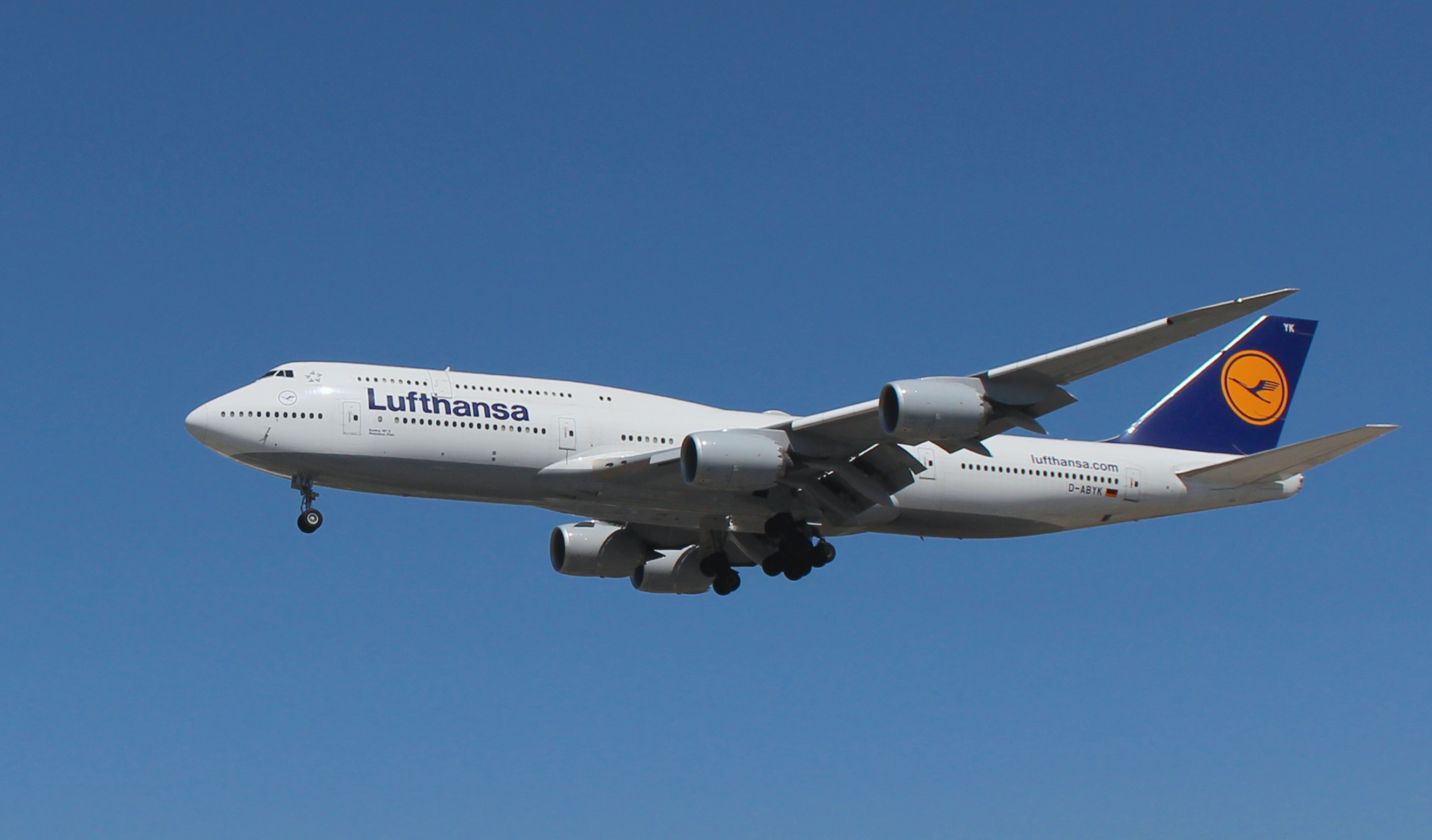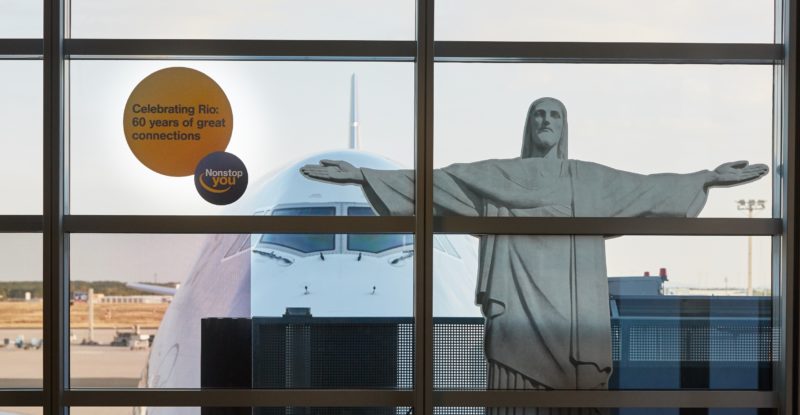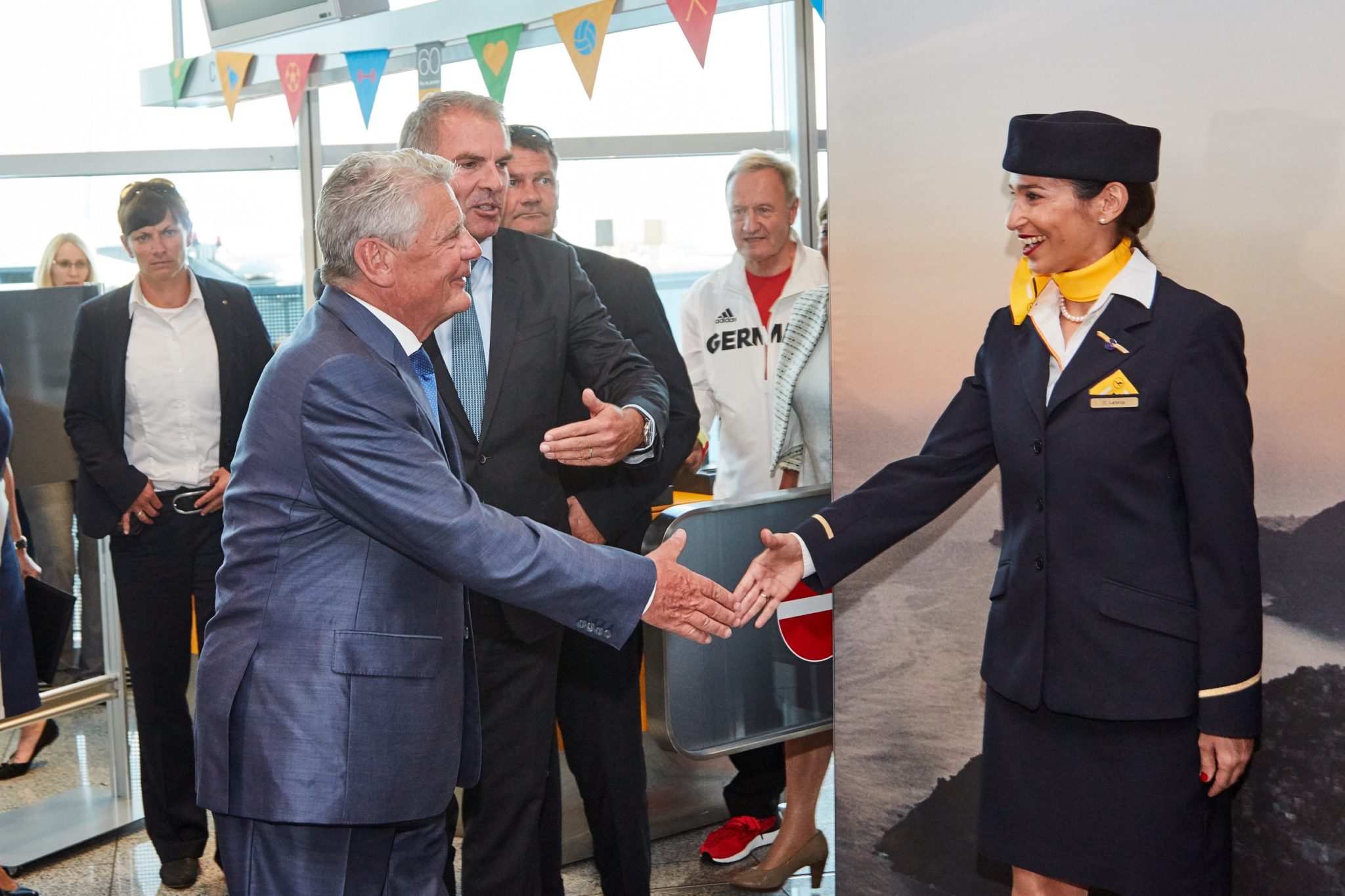What does it take to fly nearly 300 Paralympic athletes from Germany to Rio de Janeiro? Careful preparation, coordination with the national Paralympic authorities, and the very same assistance that passengers with reduced mobility (PRMs) can request at the airport, Lufthansa’s manager for passenger processes & passenger technology, Ute Marcotte-Luther, tells Runway Girl Network.
“It was definitely a very special flight for us,” Marcotte-Luther says, involving “a lot of planning and a lot of effort. We had a total of 261 passengers who were athletes travelling to the Paralympics, booked in economy class by the DBS [the German National Paralympic Committee] — none were booked in premium economy, business or first” on the charter Boeing 747-8I.
Apart from a gate event with dignitaries who included German Federal President Joachim Gauck, regional ministers and Lufthansa CEO Carsten Spohr, “we had two extra colleagues from our special service care team, and a lot more assistants helping passengers onto the aircraft. There was an early briefing with the crew, who knew exactly what flight they were going to be on, and they are always quite excited to be hand-picked for it. Boarding started well ahead of time, so all passengers who needed to be boarded via wheelchairs were asked to present themselves early to be boarded.
“We had five specially trained paramedics, which we use in our everyday operation as well whenever a person has to be boarded in an on-board wheelchair. We made available an additional scissor-lift truck, which we use whenever we cannot board and deboard passengers in a wheelchair via a jetty.”
 All of these measures are used on regularly scheduled flights across the Lufthansa network, Marcotte-Luther explains. Compared with scheduled flights, for the Paralympic charter “the planning here was much easier for us because we get so much good information ahead of time when we work with the DBS. They contact us well in advance, and we get lists of athletes and their needs. So it is much easier for us to plan flights like this than in our daily operation, where sometimes we actually even get the wrong information on a passenger.”
All of these measures are used on regularly scheduled flights across the Lufthansa network, Marcotte-Luther explains. Compared with scheduled flights, for the Paralympic charter “the planning here was much easier for us because we get so much good information ahead of time when we work with the DBS. They contact us well in advance, and we get lists of athletes and their needs. So it is much easier for us to plan flights like this than in our daily operation, where sometimes we actually even get the wrong information on a passenger.”
While regularly scheduled flights can have up to 100 passengers requiring wheelchairs on particular routes — Marcotte-Luther cites India, for cultural reasons and for a strong visiting friends and relatives market with a high number of older and less mobile passengers — the Paralympic charter had 39. Of those, “26 could not walk at all, five who could not use stairs, and eight could not walk long distances,” Marcotte-Luther says.
These distinctions are set by IATA, and are also standard for scheduled flights. Each has a code: WCHC passengers are unable to walk at all, and require the greatest assistance from the airline whilst on board and at the airport. WCHS is the code for passengers who cannot use stairs, while WCHR denotes passengers unable to walk long distances.
“We see a lot of wheelchair passengers on some flights every day,” Marcotte-Luther says, “but very few of these passengers are seated in a wheelchair and cannot walk at all.”
The key difference on the Paralympic flight, therefore, was the relatively low number of overall assistance passengers — especially those coded WCHR, unable to walk long distances — compared with the relatively high number of WCHC passengers, who are unable to walk at all.
Perhaps surprisingly, “a real major issue for us for the Paralympics flights — and the Olympics flights — is the sporting equipment that the athletes are taking along. It’s not the wheelchairs, it’s the equipment. We’re talking boats, bicycles — all that sporting equipment has to go on that flight as well, and that is a major task. For the Olympics team, too, that takes a lot of planning. We need lots of information, well in advance, because it all has to fit into the cargo compartment.”
For the Paralympic-specific equipment, Marcotte-Luther outlines that assistive devices being carried underneath the belly of the Boeing 747-8I included “25 athletes’ sports wheelchairs, 37 wheelchairs that could not be folded, 13 folding wheelchairs, [and] one electric wheelchair weighing up to 140 kilos [which] had to be loaded in the cargo compartment of the aircraft.”

The extra cargo capacity of the world’s longest passenger aircraft comes in useful for athletic and mobility equipment. Image: John Walton
“The planning started very far in advance,” Marcotte-Luther says. “This was a special flight: normally there is one flight per day to go to Rio, but that night there were two. So, many departments go into the planning of that flight.”
The work — and Lufthansa’s extensive experience assisting passengers with reduced mobility — paid off: successfully delivering a planeload of Paralympians and their equipment to Rio, ready for two weeks of inspirational sport.













